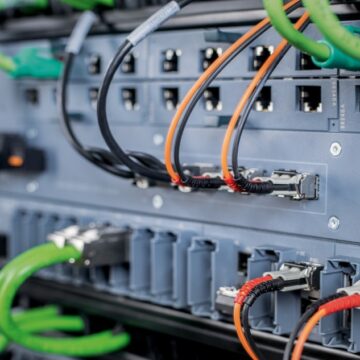In today’s digital age, an efficient workspace is more than just a desirable asset, it’s a necessity. As businesses across Australia continue to evolve and adapt to the shifting technological landscape, understanding how to create an efficient workspace becomes increasingly important. This article will explore several key elements that contribute to workspace efficiency, infrastructure cabling, audio-visual technology, ergonomics, and smart technologies.
Infrastructure Cabling in Workspace Efficiency
Infrastructure cabling and data centres are often seen as the backbone of any modern business. They form the foundation upon which our digital communications rely. Proper data cabling installation can significantly enhance workspace efficiency by ensuring consistent and reliable connectivity. In Australia, where businesses are spread over vast distances, maintaining strong communication lines can be the difference between success and failure. A poorly managed data centre or substandard cabling system can lead to downtime, slow connection speeds, and ultimately, decreased productivity. Therefore, investing in a high-quality infrastructure cabling system is a crucial step towards creating an efficient workspace.
Audio Visual Conferencing in Workspace Efficiency
In an era where remote work and virtual meetings have become the norm, enterprise audio-visual and video conferencing technologies play a pivotal role in workspace efficiency. These technologies enable seamless communication and collaboration, regardless of distance. They eliminate geographical barriers, allowing Australian businesses to connect with clients, partners, and employees worldwide. By integrating these technologies into their workspaces, businesses can foster a culture of collaboration and drive efficiency.
The Importance of Ergonomics
Ergonomics is another crucial factor in creating an efficient workspace. It involves designing the workspace to fit the worker, rather than forcing the worker to fit the workspace. An ergonomic workspace reduces the risk of discomfort and injury, leading to increased productivity and employee satisfaction. In Australia, with its strong focus on worker health and safety, implementing ergonomic design principles in workspaces can not only boost efficiency but also contribute to a healthier, happier workforce.
The Role of Smart Technologies
Smart technologies are reshaping the way we work. From Internet of Things (IoT) devices to artificial intelligence (AI) and automation tools, these technologies streamline operations, increase productivity, and create a more efficient workspace. Australian businesses that successfully integrate smart technologies into their workspaces stand to gain a significant competitive advantage in today’s fast-paced digital economy.
Creating an efficient workspace involves a multi-faceted approach, incorporating effective infrastructure cabling, audio-visual technology, ergonomic design, and smart technologies. By understanding and leveraging these elements, businesses across Australia can create workspaces that not only meet the demands of the digital age but also drive productivity and success.













